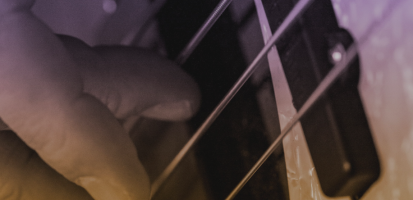| Background information | |
|---|---|
| Birth name | John William Casady |
| Born | (1944-04-13) April 13, 1944 Washington, D.C., US |
| Genres | Rock, blues |
| Instruments | Bass guitar |
| Years active | 1964–present |
| Associated acts | Jefferson Airplane, Hot Tuna, Moonalice, Jimi Hendrix, SVT, Roky Erickson |
| Website | http://www.jackcasady.com (requires flash) |
| Notable instruments:
Fender Jazz Bass, modified with addition of a Fender Precision Bass pickup at the base of the neck (1962–1967) |
|
John William “Jack” Casady (born April 13, 1944) is an American bass guitarist, best known as a member of Jefferson Airplane and Hot Tuna. Jefferson Airplane became the first successful exponent of the San Francisco Sound. Their singles, including “Somebody to Love” and “White Rabbit,” had a more polished style and successfully charted in 1967 and 1968. Casady, along with the other members of Jefferson
Casady was born in Washington D.C., the son of Mary Virginia (née Quimby) and William Robert Casady. His father was of half Irish Protestant and half Polish Jewish ancestry His mother was a relative of aviator Harriet Quimby; some of her family had been in the U.S. since the 1600s.
First playing as a lead guitarist with the Washington D.C. area rhythm and blues band “The Triumphs”, he switched to bass during his high school years and while still underage (and with a forged I.D.), played the Washington D.C club scene, backing artists such as Little Anthony and the Imperials.
Casady became the bass player for Jefferson Airplane when lead guitarist Jorma Kaukonen, a high school friend and former Triumphs rhythm guitarist, invited him to join in late September 1965. He replaced original Jefferson Airplane bassist Bob Harvey in October 1965.
Casady stepped beyond the conventional rhythmic and chord-supporting role of rock & roll, in order to explore other possible melodic ideas offered by the rhythm and chord progressions. His impact is immediately evident on Airplane debut album Jefferson Airplane Takes Off (1966) on tracks such as “Let Me In” and “Run Around.”
The “Takes Off” LP quotes Marty Balin as saying “He carries it. He’s been with James Brown and other groups and he knows.” The live Airplane album Bless Its Pointed Little Head, recorded in 1968, demonstrates Casady’s unique walking line style to the fullest, as his Guild Starfire bass signal was delivered through a Versatone amplifier which gave his instrument a distinctive growling sound when played in the higher register. The Fred Neil track “The Other Side of This Life” remains the quintessential example of his style. On later Airplane albums, such as Bark, Long John Silver and the live Thirty Seconds Over Winterland, Casady switched over to a $4,000 custom-made Alembic bass (No. 001, the first made by the company) dubbed “Mission Control”. The extraordinarily grand sound Casady produced during his 1968–1971 heyday—nowhere better heard than in his multi-tracked playing on “Sunrise,” a song from Paul Kantner’s 1970 solo album Blows Against the Empire—inspired fans to assign him the affectionate nickname of “God.”
Casady and Kaukonen formed Hot Tuna in 1969, and they still perform to the present day. The group has morphed over the years from an acoustic blues unit to an electric boogie band to a rampaging metal act and back again. Casady is equally comfortable accompanying an acoustic Kaukonen (“Mann’s Fate”, 1970) or electric jamming (“John’s Other”, 1971). Casady’s solo on “Candy Man” (Hot Tuna’s First Pull Up, Then Pull Down, 1971) also shows his ability at carrying the melody rather than just playing rhythmic scales, a key characteristic of his bass solo work. Some exquisitely intricate playing is evident on the 1972 album Burgers, particularly the sparkling instrumental track “Water Song”, which Casady has described as featuring “lead bass”. Another Burgers track, ” Sunny Day Strut”, has Casady’s bass dueling with Kaukonen’s lead guitar. When Tuna became a power trio in the mid-1970s, Casady’s Guild Flying V custom bass became his trademark. Later works, especially Live in Japan (1997), still testify to his creativity as evidenced by the continually evolving bass solos on “Candy Man”, “Good Shepherd” and “99 Year Blues”.
Casady is widely known for the commanding tonal quality of his playing, something that he acknowledges is deliberate. He has remarked that tone is the most essential quality for an electric bassist, stating “Tone is your signature as to who you are… The music builds around the tone. It isn’t just a series of notes or the articulation or the technique. The signature sound of a great musician is his tone and that sets him apart from others.”















